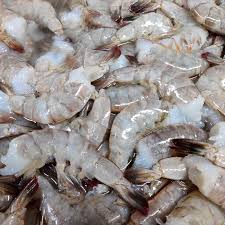SUPPORT AMERICAN SHRIMP HARVESTERS, ASK FOR WILD CAUGHT AMERICAN SEAFOOD!
Are wild-caught fish healthier for us than the farm-raised variety?
When we think of the health benefits of fish, one of the first nutrients that comes to mind is omega-3 fatty acids. In that regard, wild-caught fish tend to be healthier; they often have higher levels of omega-3s compared to farmed fish.
But omega-3s are only one component of the health quality of fish.
One of the biggest concerns with farm-raised fish is its potential to contain industrial chemicals, including terephthalic acid (TPA) and polyvinyl chloride (PVC). Fish raised in farms may also contain chemicals used to "improve" their coloring (e.g. the salmon you buy that appears ultra-pink), which could have an impact on our health. Because of the conditions in which most farmed fish are raised, microbial contamination of their habitat could also pose a health threat to us and to wild populations of fish, which we have seen in wild- and farmed-salmon populations in the Pacific Northwest.
And then there's the question of the antibiotics. Just as there are health concerns over antibiotics used in livestock, such as chickens and cattle, farmed-raised fish also are fed antibiotics, which we ingest when we consume fish.
What makes farm-raised fish different from wild-caught?
Wild-caught fish have the freedom to roam in the water and eat any prey they want. Farmed fish, on the other hand, do not live a "natural" life.
Farmed fish are generally "grown" as monocultures – or a single species of fish. Depending on the species of fish, they may be reared within a huge netted system in the ocean, in a fjord, or even in a freshwater pond.
Most farmed fish are grown in nets that are overcrowded, which can pose problems. The population can become infested with sea lice, or other microbes, due to their congested living conditions. Diseases can spread more easily in a population of a singular species of fish.
Farmed fish are typically fed an unvaried diet – usually, a fish feed or fish pellets that contain ingredients like wild fish, certain nutrients, coloring, and even antibiotics.

DISCLAIMER: The above infomation is from the UCLA website: Click to visit UCLA Website
